Research on the Feasibility of Applying GRU and Attention Mechanism Combined with Technical Indicators in Stock Trading Strategies
Abstract
:1. Introduction
2. Time-Series Deep Neural Networks
2.1. Deep Neural Network
2.2. Recurrent Neural Network (RNN)
- One to one: fixed-length input/output. For example, input the stock price of the day, and output the stock price of the next day.
- One to many: single input, multiple output. For example, take the stock price of the day as the input, and output the estimated stock price in the next few days.
- Many to one: Multiple inputs, single output. For example, input the stock price in a week, and output next week’s stock price.
- Synchronization many to many: Both input and output are multiple. For example, input one week’s stock price and synchronously output the next week’s stock price in real time.
- Asynchronous many to many: Input one week’s stock price, after the input is over, output the next week’s stock price asynchronously.
- Asynchronous sequence-to-sequence (Seq2Seq): This type of input and output are sequence data, and before output is generated, the input message and the code are encoded into a set of context vectors, and the output is to decode the feature vector. The Seq2Seq model can obtain the context dependence of the input more accurately.
2.3. Gated Recurrent Unit (GRU)
2.4. Attention Mechanism
3. The Proposed GRU-Attention Architecture and Technical Indicators Normalization
3.1. The Proposed GRU-Attention Prediction Model
3.2. Technical Indicators Normalization
3.2.1. The Relative Strength Index (RSI)
3.2.2. Bias Ratio (BIAS)
3.3. Model Complexity Analysis
4. Experimental Results and Analysis
4.1. Experimental Environment Settings
4.2. Experimental Result of the Relative Strength Index
4.3. Experimental Result of the Bias Ratio
4.4. Experimental Results of Applying to Backtest of Trading Strategies
4.5. Experimental Results Compared to the State-of-the-Art Models and Traditional Methods
4.6. Experimental Results of Applying to Top 10 Weighted Stocks in TWSE
5. Conclusions and Future Works
- Famous financial commodity analysis tools such as Relative Strength Index and Bias Ratio can effectively assist the prediction accuracy of time series neural networks.
- Taking the TPE: 2330 as an example, the proposed GRU-Attention model can achieve an average prediction accuracy of more than 70%.
- With the aid of RSI and BIAS TIs, the rising points predicted by the model can be positively paid in most cases.
- Compared with other deep network and non-deep network models, the proposed approach has a significant performance improvement in prediction accuracy.
- Extend the concepts proposed in this study to other non-sequential networks, such as CNN, Transformer, etc.
- Apply the proposed model to other types of financial products, such as futures, options, day trading, etc.
- Extend the deep learning trading strategies to the investment portfolio of different financial products.
- Future research on the use of deep networks for trading strategies can be extended to investment portfolios.
- Cryptocurrency is a popular commodity in the current investment market, and this research can be extended to the analysis of cryptocurrency trends.
Funding
Data Availability Statement
Acknowledgments
Conflicts of Interest
References
- Samuel, A.L. Some studies in machine learning using the game of checkers. IBM J. Res. Dev. 1959, 3, 210–229. [Google Scholar] [CrossRef]
- Mohri, M.; Rostamizadeh, A.; Talwalkar, A. Foundations of Machine Learning; MIT Press: Cambridge, MA, USA, 2018. [Google Scholar]
- Jordan, M.I.; Mitchell, T.M. Machine learning: Trends, perspectives, and prospects. Science 2015, 349, 255–260. [Google Scholar] [CrossRef] [PubMed]
- Chapelle, O.; Scholkopf, B.; Zien, A. Semi-supervised learning (chapelle, o. et al., eds.; 2006) [book reviews]. IEEE Trans. Neural Netw. 2009, 20, 542. [Google Scholar] [CrossRef]
- Kaelbling, L.P.; Littman, M.L.; Moore, A.W. Reinforcement learning: A survey. J. Artif. Intell. Res. 1996, 4, 237–285. [Google Scholar] [CrossRef] [Green Version]
- Eiben, A.E.; Raue, P.E.; Ruttkay, Z. Genetic algorithms with multi-parent recombination. In International Conference on Parallel Problem Solving from Nature; Springer: Berlin/Heidelberg, Germany, 1994; pp. 78–87. [Google Scholar]
- Spirtes, P.; Glymour, C.N.; Scheines, R.; Heckerman, D. Causation, Prediction, and Search; MIT Press: Cambridge, MA, USA, 2000. [Google Scholar]
- Fotheringham, A.S.; Brunsdon, C.; Charlton, M. Geographically Weighted Regression: The Analysis of Spatially Varying Relationships; John Wiley & Sons: Hoboken, NJ, USA, 2003. [Google Scholar]
- Cortes, C.; Vapnik, V. Support-vector networks. Mach. Learn. 1995, 20, 273–297. [Google Scholar] [CrossRef]
- Safavian, S.R.; Landgrebe, D. A survey of decision tree classifier methodology. IEEE Trans. Syst. Man Cybern. 1991, 21, 660–674. [Google Scholar] [CrossRef] [Green Version]
- Goodfellow, I.; Bengio, Y.; Courville, A. Deep Learning; MIT Press: Cambridge, MA, USA, 2016. [Google Scholar]
- Huang, X.L.; Ma, X.; Hu, F. Machine learning and intelligent communications. Mob. Netw. Appl. 2018, 23, 68–70. [Google Scholar] [CrossRef] [Green Version]
- Huang, X.L.; Tang, X.; Huan, X.; Wang, P.; Wu, J. Improved KMV-cast with BM3D denoising. Mob. Netw. Appl. 2018, 23, 100–107. [Google Scholar] [CrossRef]
- Adi, E.; Anwar, A.; Baig, Z.; Zeadally, S. Machine learning and data analytics for the IoT. Neural Comput. Appl. 2020, 32, 16205–16233. [Google Scholar] [CrossRef]
- Loey, M.; Manogaran, G.; Taha, M.H.N.; Khalifa, N.E.M. A hybrid deep transfer learning model with machine learning methods for face mask detection in the era of the COVID-19 pandemic. Measurement 2021, 167, 108288. [Google Scholar] [CrossRef] [PubMed]
- Mikolov, T.; Karafiát, M.; Burget, L.; Černocký, J.; Khudanpur, S. Recurrent neural network based language model. In Proceedings of the Eleventh Annual Conference of the International Speech Communication Association, Chiba, Japan, 26–30 September 2010. [Google Scholar]
- Hochreiter, S.; Schmidhuber, J. Long short-term memory. Neural Comput. 1997, 9, 1735–1780. [Google Scholar] [CrossRef]
- Cho, K.; Van Merriënboer, B.; Gulcehre, C.; Bahdanau, D.; Bougares, F.; Schwenk, H.; Bengio, Y. Learning phrase representations using RNN encoder-decoder for statistical machine translation. arXiv 2014, arXiv:1406.1078. [Google Scholar]
- Vaswani, A.; Shazeer, N.; Parmar, N.; Uszkoreit, J.; Jones, L.; Gomez, A.N.; Kaiser, L.; Polosukhin, I. Attention is all you need. Adv. Neural Inf. Process. Syst. 2017, 2017, 5998–6008. [Google Scholar]
- Nelson, D.M.; Pereira, A.C.; de Oliveira, R.A. Stock market’s price movement prediction with LSTM neural networks. In Proceedings of the 2017 International Joint Conference on Neural Networks (IJCNN), Anchorage, AL, USA, 14–19 May 2017; pp. 1419–1426. [Google Scholar]
- Chen, Y.; He, K.; Tso, G.K. Forecasting crude oil prices: A deep learning based model. Procedia Comput. Sci. 2017, 122, 300–307. [Google Scholar] [CrossRef]
- Fabbri, M.; Moro, G. Dow Jones Trading with Deep Learning: The Unreasonable Effectiveness of Recurrent Neural Networks. Data 2018, 2018, 142–153. [Google Scholar]
- Chen, W.; Yeo, C.K.; Lau, C.T.; Lee, B.S. Leveraging social media news to predict stock index movement using RNN-boost. Data Knowl. Eng. 2018, 118, 14–24. [Google Scholar] [CrossRef]
- Cakra, Y.E.; Trisedya, B.D. Stock price prediction using linear regression based on sentiment analysis. In Proceedings of the 2015 International Conference on Advanced Computer Science and Information Systems (ICACSIS), Depok, Indonesia, 10–11 October 2015; pp. 147–154. [Google Scholar]
- Li, H.; Shen, Y.; Zhu, Y. Stock price prediction using attention-based multi-input LSTM. In Proceedings of the Asian Conference on Machine Learning, PMLR, Nagoya, Japan, 14–16 November 2018; pp. 454–469. [Google Scholar]
- Gonçalves, R.; Ribeiro, V.M.; Pereira, F.L.; Rocha, A.P. Deep learning in exchange markets. Inf. Econ. Policy 2019, 47, 38–51. [Google Scholar] [CrossRef]
- Feng, F.; He, X.; Wang, X.; Luo, C.; Liu, Y.; Chua, T.S. Temporal relational ranking for stock prediction. ACM Trans. Inf. Syst. 2019, 37, 1–30. [Google Scholar] [CrossRef] [Green Version]
- Lee, J.; Kim, R.; Koh, Y.; Kang, J. Global stock market prediction based on stock chart images using deep Q-network. IEEE Access 2019, 7, 167260–167277. [Google Scholar] [CrossRef]
- Nabipour, M.; Nayyeri, P.; Jabani, H.; Mosavi, A.; Salwana, E. Deep learning for stock market prediction. Entropy 2020, 22, 840. [Google Scholar] [CrossRef] [PubMed]
- Ha, D.A.; Liao, C.H.; Tan, K.S.; Yuan, S.M. Deep Learning Models for Predicting Monthly TAIEX to Support Making Decisions in Index Futures Trading. Mathematics 2021, 9, 3268. [Google Scholar] [CrossRef]
- Cheng, L.C.; Huang, Y.H.; Hsieh, M.H.; Wu, M.E. A Novel Trading Strategy Framework Based on Reinforcement Deep Learning for Financial Market Predictions. Mathematics 2021, 9, 3094. [Google Scholar] [CrossRef]
- Wysocki, M.; Ślepaczuk, R. Artificial Neural Networks Performance in WIG20 Index Options Pricing. Entropy 2022, 24, 35. [Google Scholar] [CrossRef]
- Liu, M.; Li, G.; Li, J.; Zhu, X.; Yao, Y. Forecasting the price of Bitcoin using deep learning. Financ. Res. Lett. 2021, 40, 101755. [Google Scholar] [CrossRef]
- Awoke, T.; Rout, M.; Mohanty, L.; Satapathy, S.C. Bitcoin price prediction and analysis using deep learning models. In Communication Software and Networks; Springer: Singapore, 2021; pp. 631–640. [Google Scholar]
- Lee, M.C.; Chang, J.W.; Hung, J.C.; Chen, B.L. Exploring the effectiveness of deep neural networks with technical analysis applied to stock market prediction. Comput. Sci. Inf. Syst. 2021, 18, 401–418. [Google Scholar] [CrossRef]
- Ng, A.; Ngiam, J.; Foo, C.Y.; Mai, Y.; Suen, C. UFLDL Tutorial. 2012. Available online: http://deeplearning.stanford.edu/wiki/index.php/UFLDL_Tutorial (accessed on 7 January 2021).
- Werbos, P. Beyond Regression: New Tools for Prediction and Analysis in the Behavioral Sciences. Ph.D. Dissertation, Harvard University, Cambridge, MA, USA, 1974. [Google Scholar]
- Widrow, B.; Hoff, M.E. Adaptive Switching Circuits; Stanford University Ca Stanford Electronics Labs: Stanford, CA, USA, 1960. [Google Scholar]
- Abiodun, O.I.; Jantan, A.; Omolara, A.E.; Dada, K.V.; Mohamed, N.A.; Arshad, H. State-of-the-art in artificial neural network applications: A survey. Heliyon 2018, 4, e00938. [Google Scholar] [CrossRef] [Green Version]
- Luo, X.; Chen, Z. English text quality analysis based on recurrent neural network and semantic segmentation. Future Gener. Comput. Syst. 2020, 112, 507–511. [Google Scholar] [CrossRef]
- Mnih, V.; Heess, N.; Graves, A. Recurrent models of visual attention. Adv. Neural Inf. Process. Syst. 2014, 2204–2212. [Google Scholar]
- Bahdanau, D.; Cho, K.; Bengio, Y. Neural machine translation by jointly learning to align and translate. arXiv 2014, arXiv:1409.0473. [Google Scholar]
- Luong, M.T.; Pham, H.; Manning, C.D. Effective approaches to attention-based neural machine translation. arXiv 2015, arXiv:1508.04025. [Google Scholar]
- Bishop, C.M. Pattern Recognition and Machine Learning; Springer: Berlin/Heidelberg, Germany, 2006. [Google Scholar]
- Wilder, J.W.; New Concepts in Technical Trading Systems. Trend Research. 1978. Available online: https://agris.fao.org/agris-search/search.do?recordID=US201300554903 (accessed on 7 January 2021).
- Abdulali, A. The Bias Ratio: Measuring the Shape of Fraud; Protégé Partners: New York, NY, USA, 2006. [Google Scholar]
- Rotman, M.; Wolf, L. Shuffling Recurrent Neural Networks. arXiv 2020, arXiv:2007.07324. [Google Scholar]
- Ho, T.K. Random decision forests. In Proceedings of the 3rd International Conference on Document Analysis and Recognition, Montreal, QC, Canada, 14–16 August 1995; Volume 1, pp. 278–282. [Google Scholar]

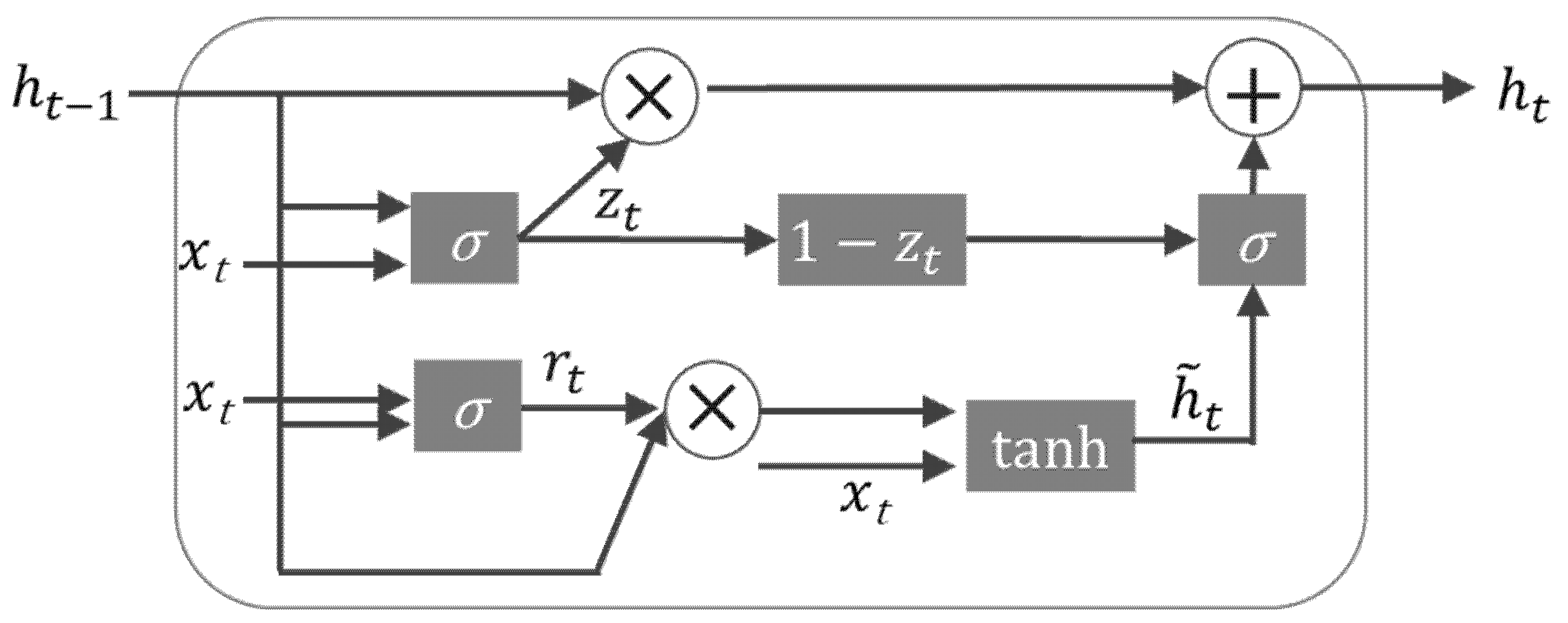


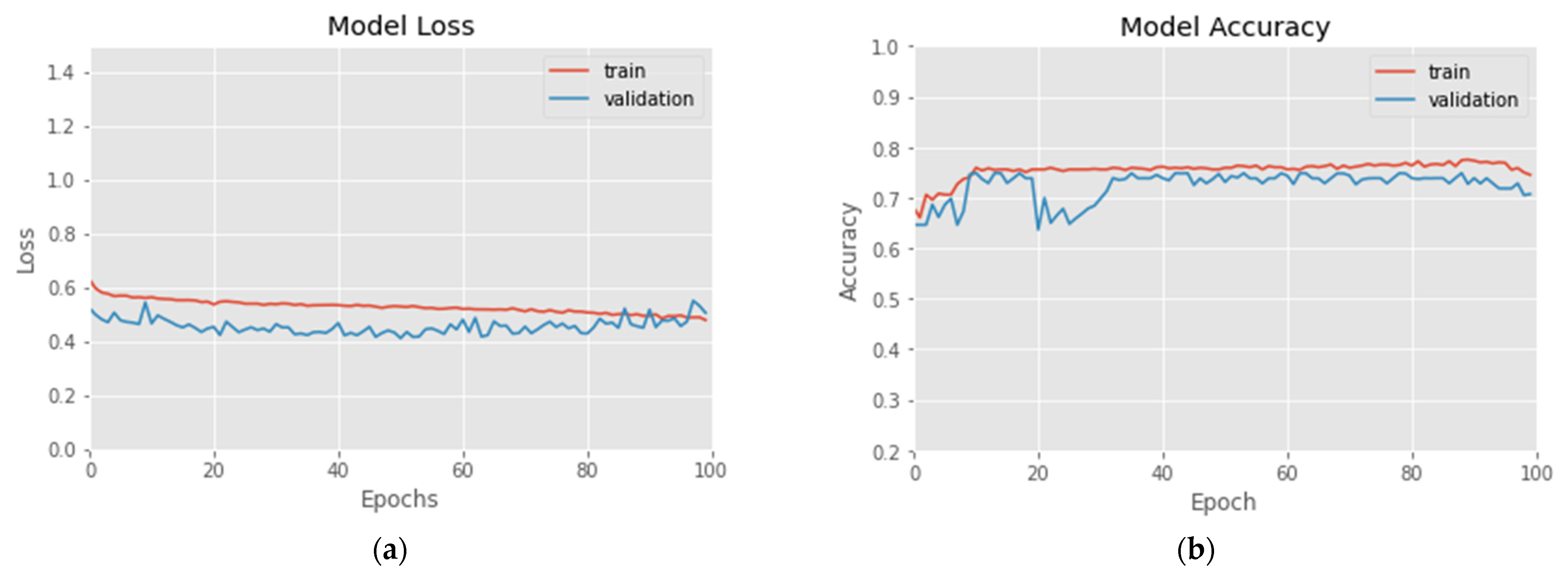
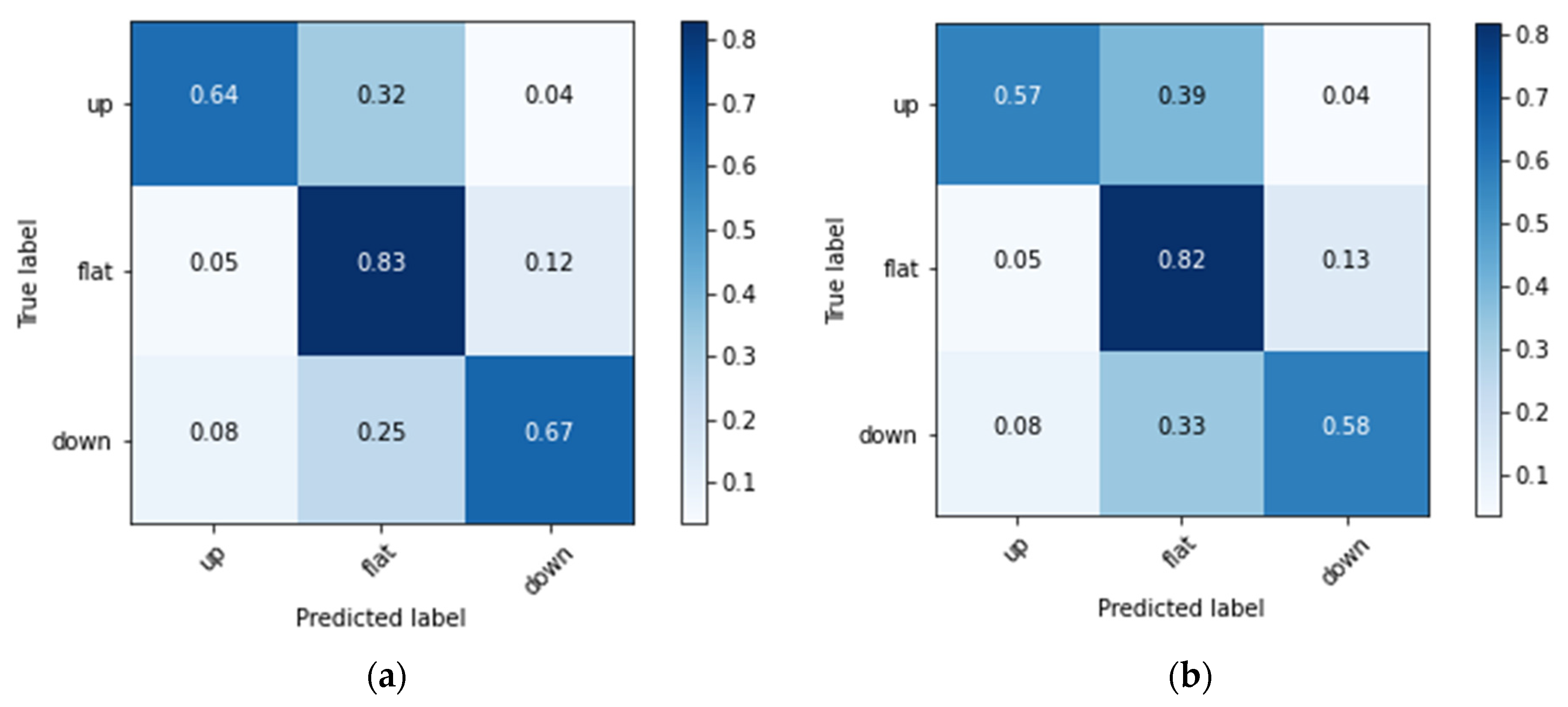
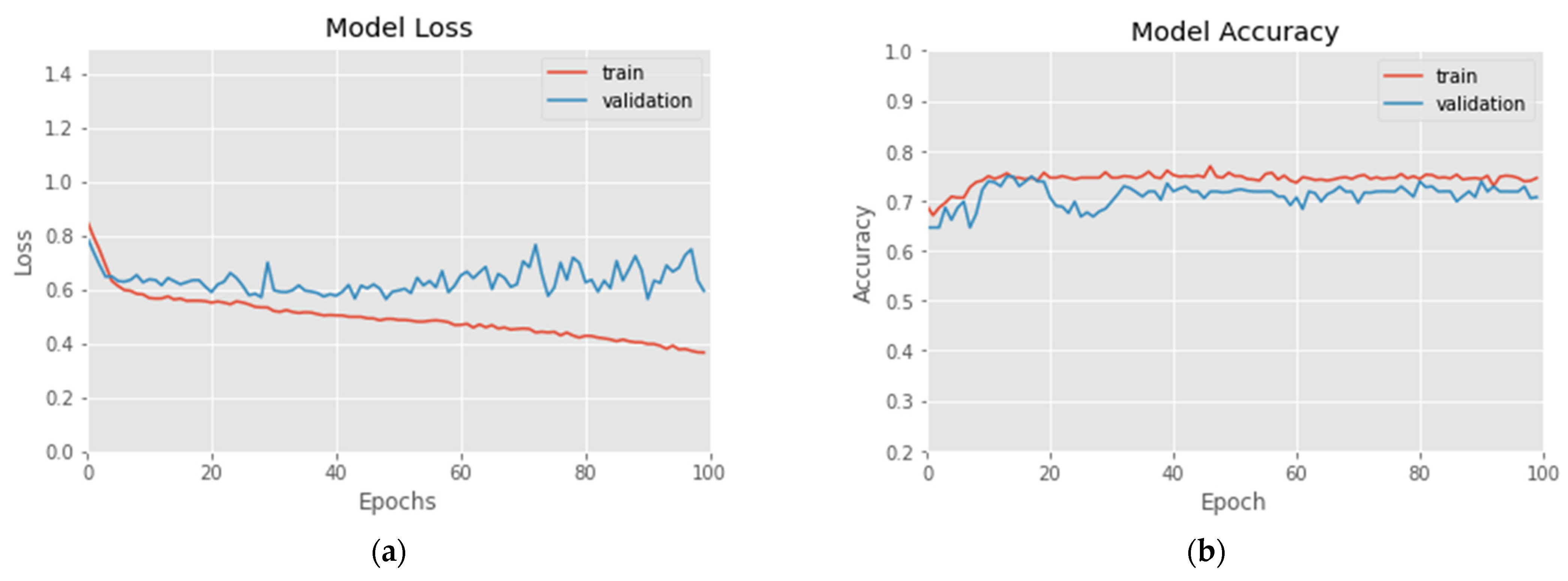

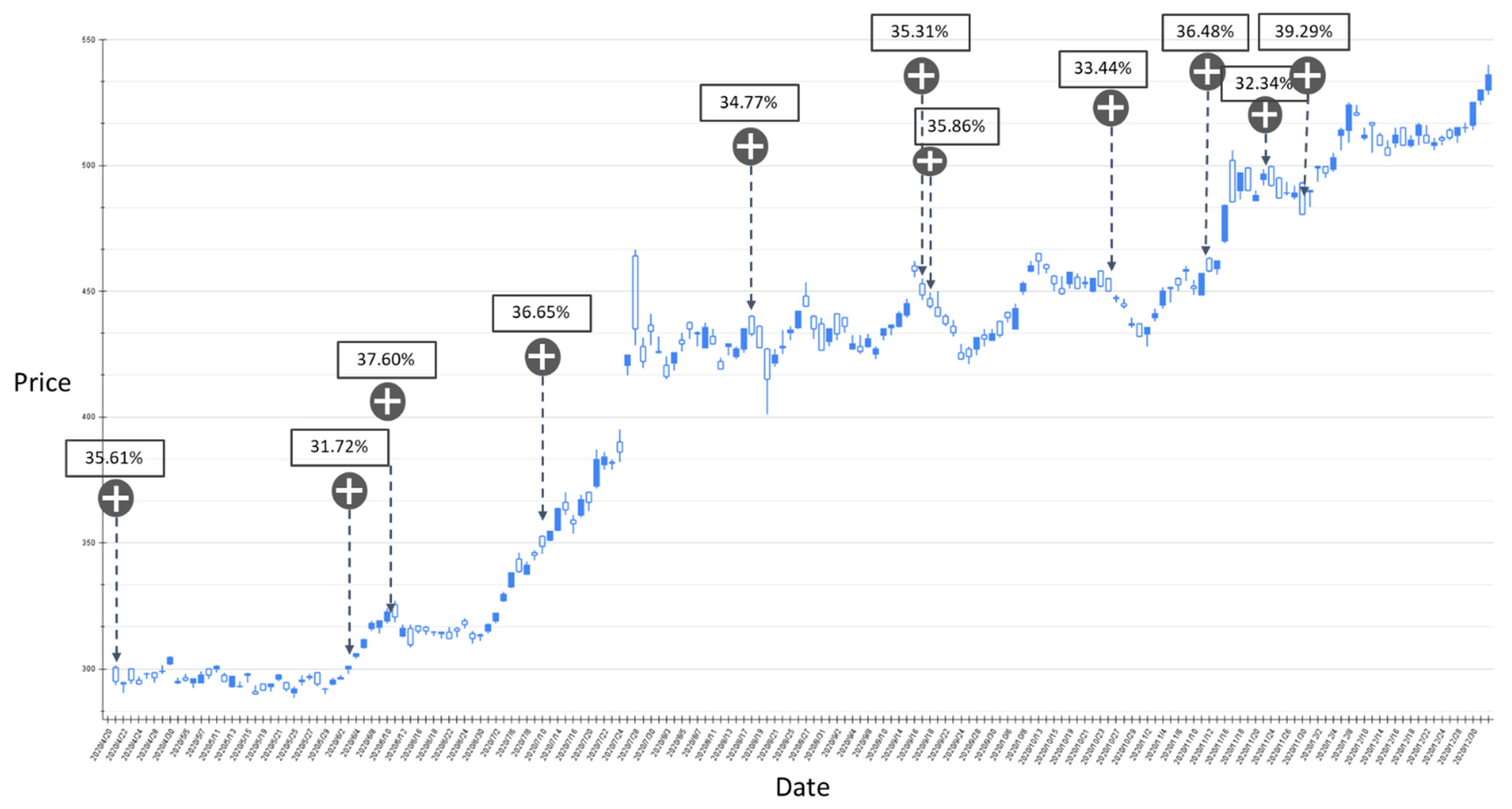
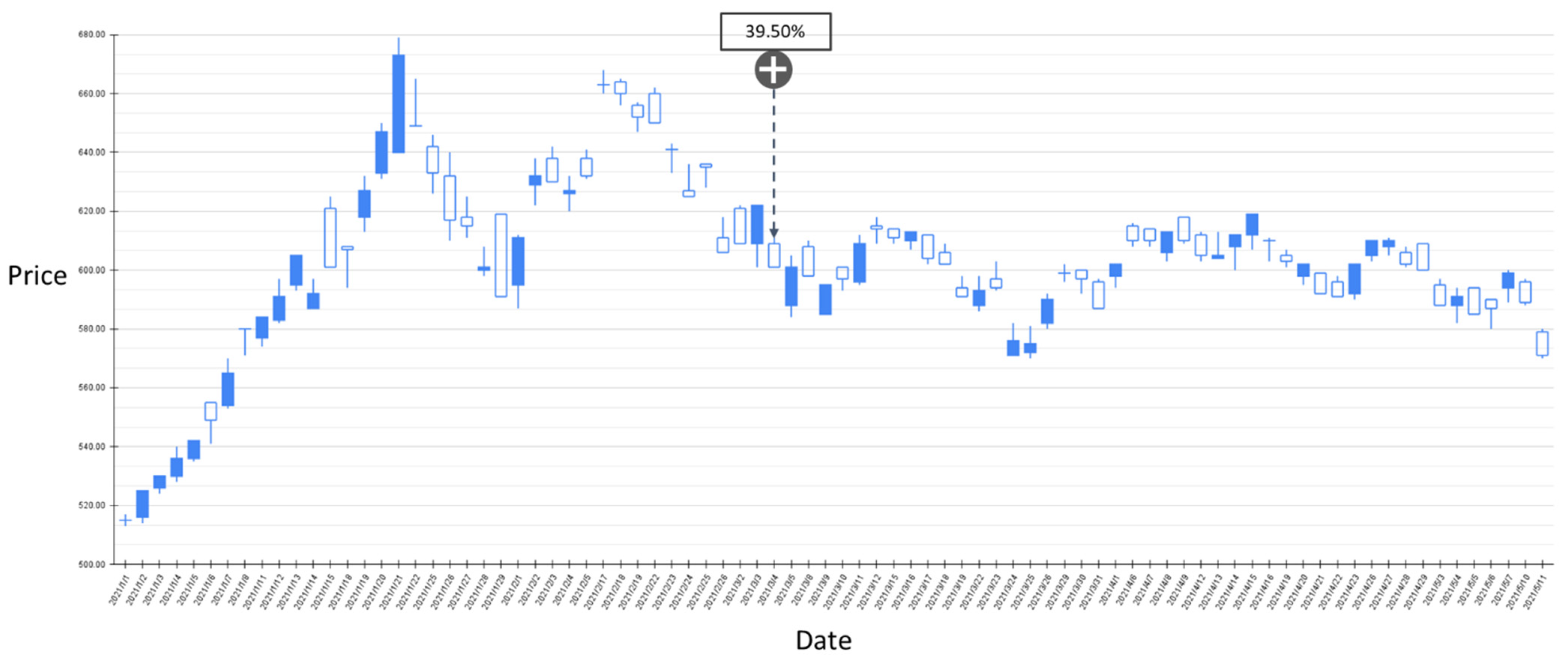
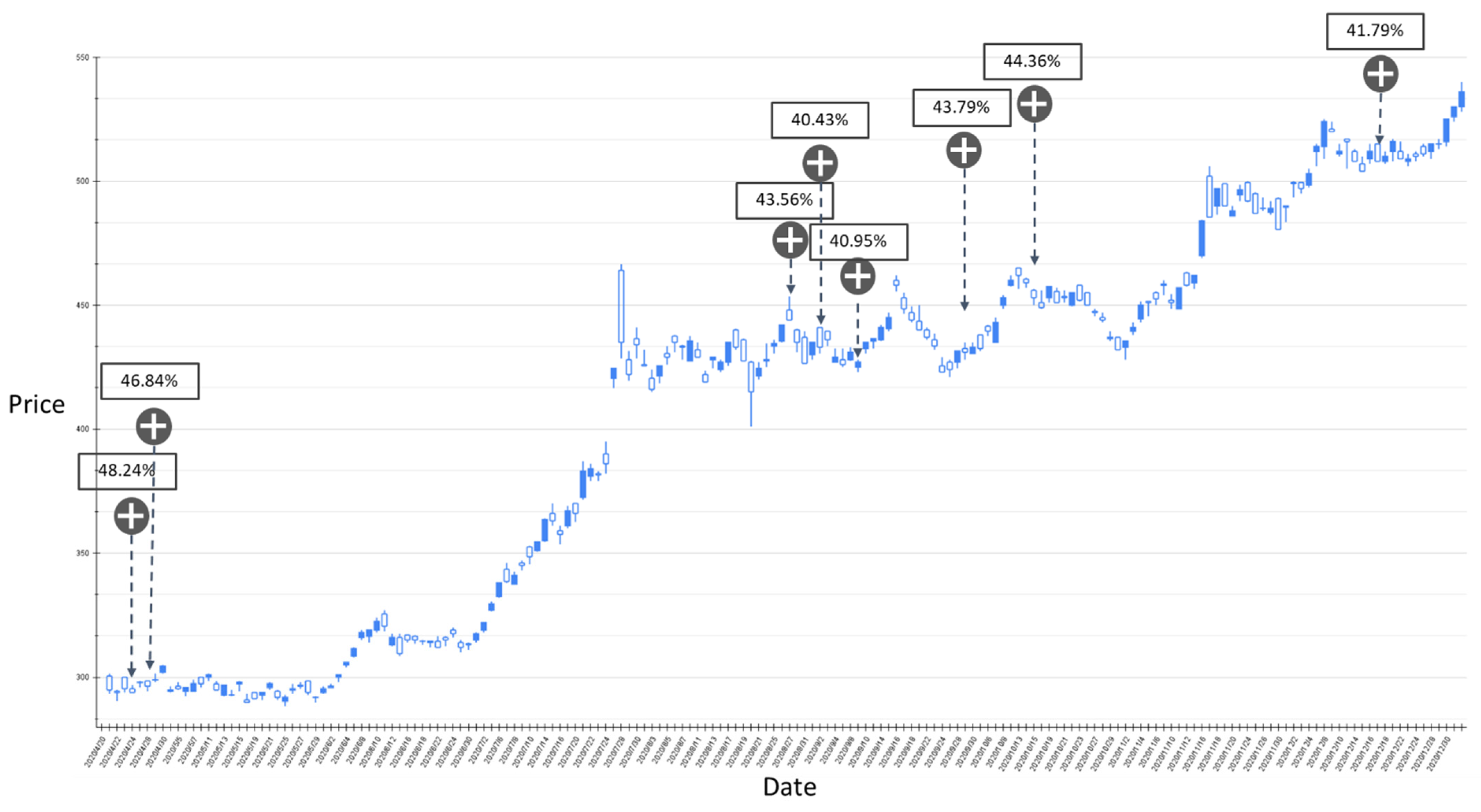
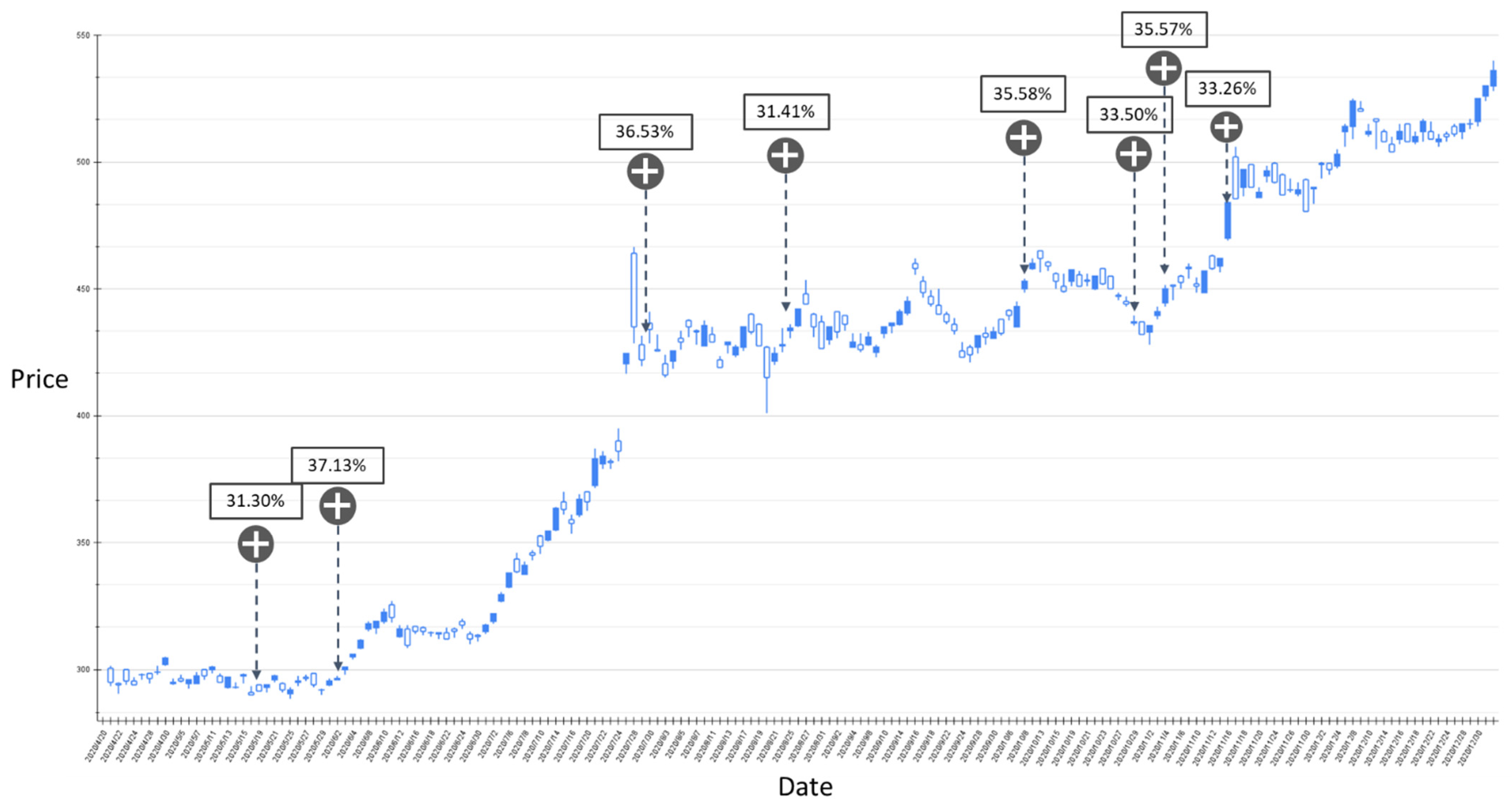
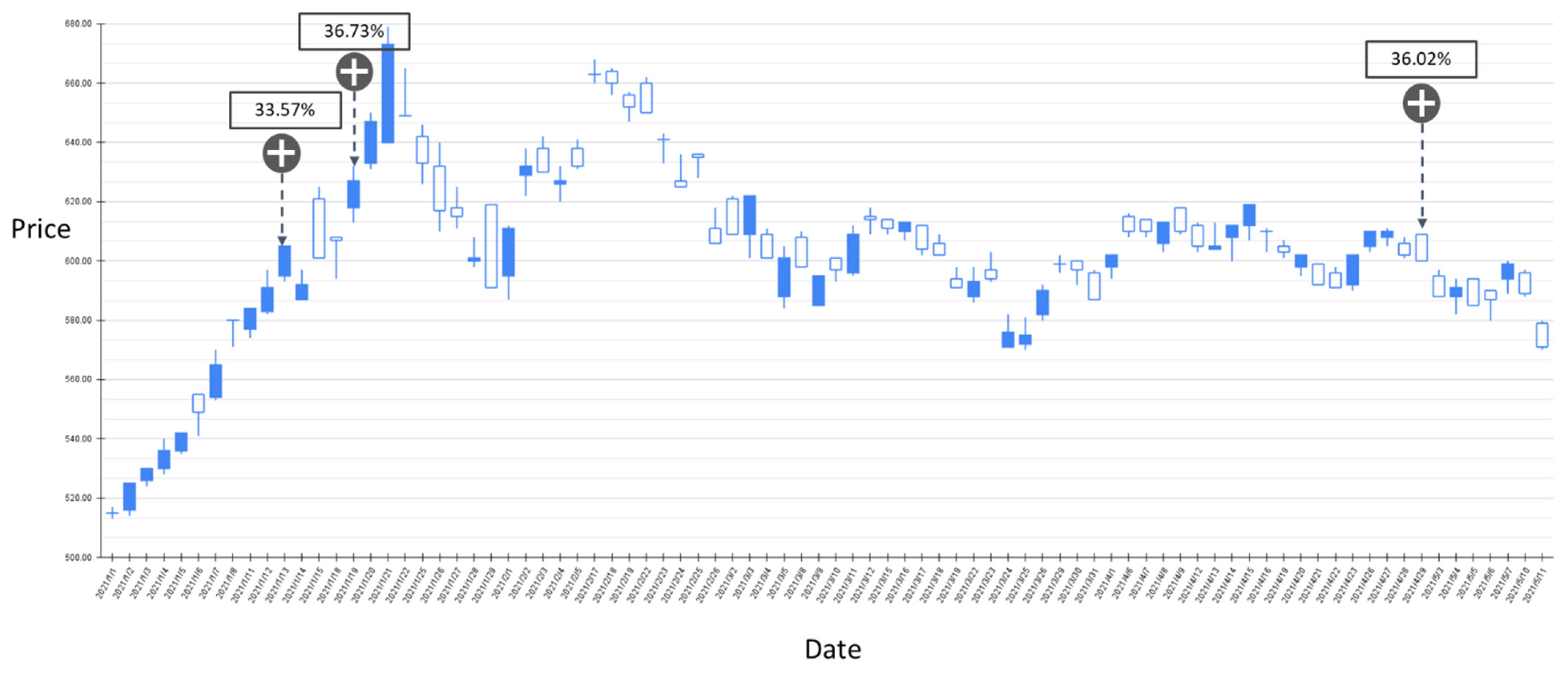
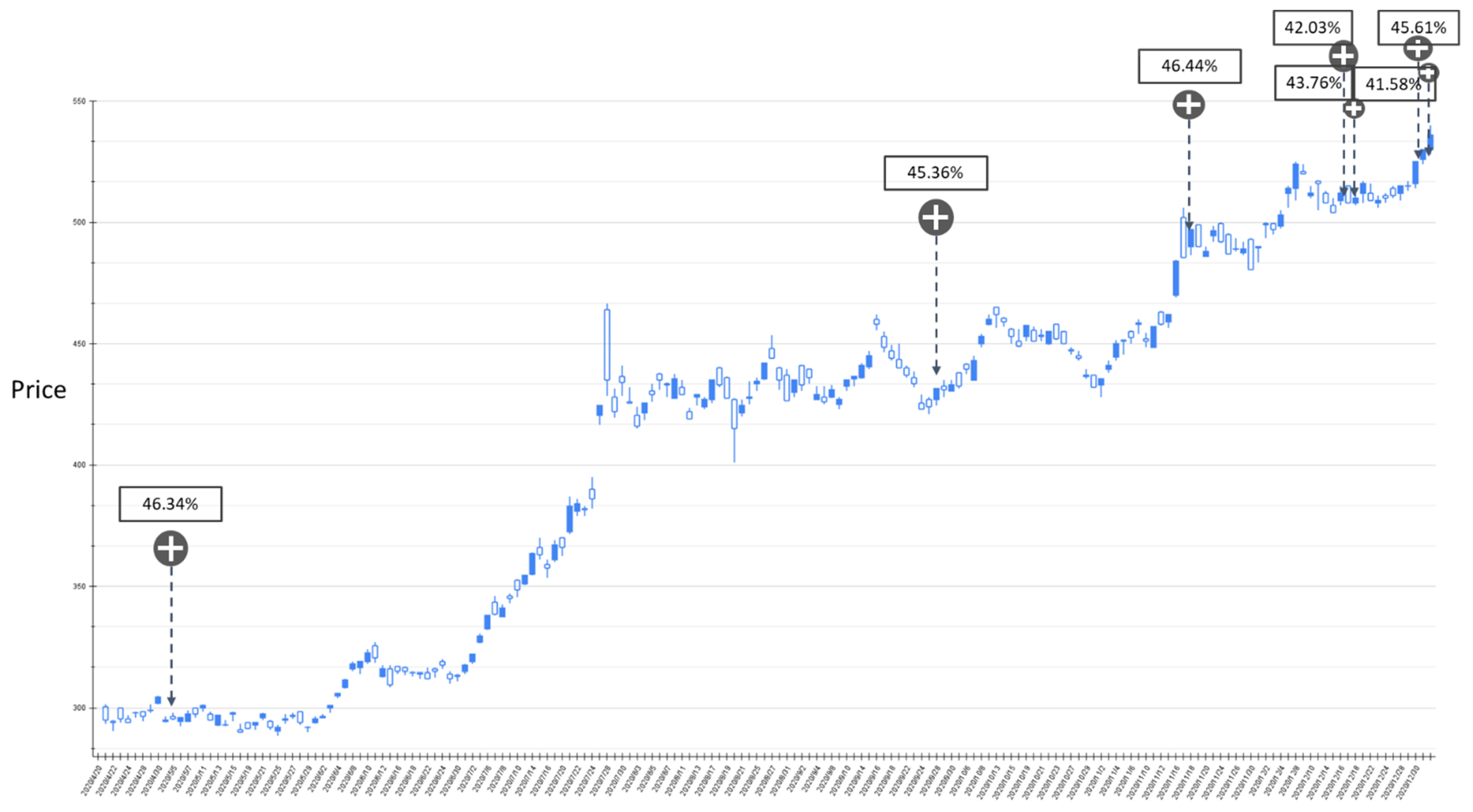
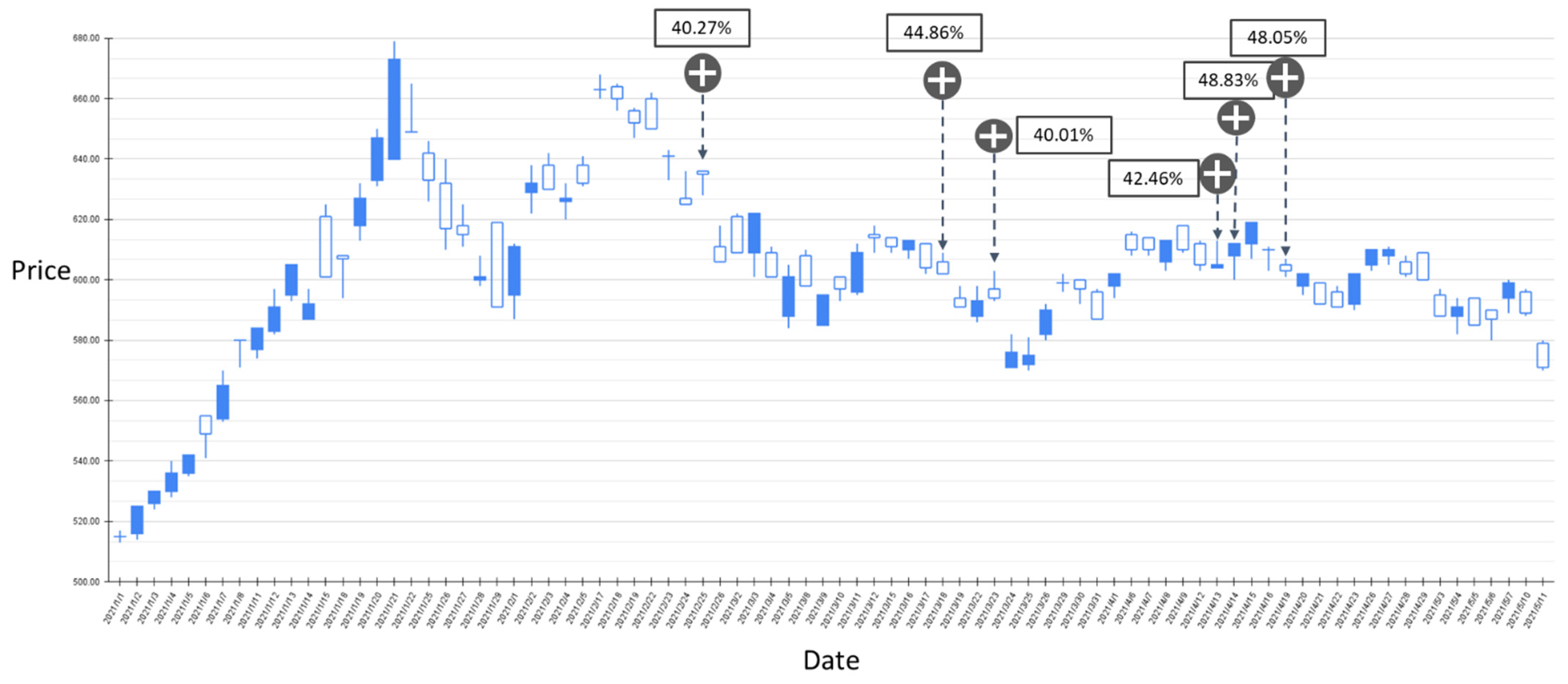
| Trend | 20_80_RSI | 30_70_RSI | |
|---|---|---|---|
| Precision | Up | 60.3% | 57.4% |
| Flat | 91.3% | 87.2% | |
| Down | 49.4% | 44.2% | |
| Recall | Up | 64.2% | 57.0% |
| Flat | 83.2% | 82.4% | |
| Down | 67.6% | 58.3% | |
| F1 Measure | Up | 62.2% | 57.2% |
| Flat | 87.1% | 84.7% | |
| Down | 57.1% | 50.3% | |
| Accuracy | 79.2% | 76.4% | |
| Trend | 6 BIAS | 12 BIAS | 20 BIAS | |
|---|---|---|---|---|
| Precision | Up | 59.2% | 55.6% | 52.2% |
| Flat | 87.2% | 86.0% | 84.3% | |
| Down | 41.6% | 37.2% | 31.3% | |
| Recall | Up | 61.0% | 57.5% | 50.0% |
| Flat | 81.4% | 79.6% | 74.3% | |
| Down | 56.6% | 53.3% | 50.3% | |
| F1 Measure | Up | 60.1% | 56.5% | 51.1% |
| Flat | 84.2% | 82.7% | 79.0% | |
| Down | 48.0% | 43.8% | 38.6% | |
| Accuracy | 75.6% | 73.2% | 68.0% | |
| Trend | GRU-Att_B | GRU-Att_R | [27] | [28] | KNN | SVM | Random Forest | |
|---|---|---|---|---|---|---|---|---|
| Precision | Up | 60.3% | 59.2% | 62.13% | 54.37% | 53.17% | 47.08% | 45.40% |
| Flat | 91.3% | 87.2% | 83.75% | 81.48% | 80.46% | 74.70% | 73.62% | |
| Down | 49.4% | 41.6% | 52.47% | 47.77% | 49.59% | 37.04% | 32.95% | |
| Recall | Up | 64.2% | 61.0% | 45.07% | 38.07% | 39.63% | 26.98% | 24.16% |
| Flat | 83.2% | 81.4% | 69.36% | 66.94% | 70.42% | 62.25% | 59.64% | |
| Down | 67.6% | 56.6% | 38.46% | 32.47% | 26.41% | 23.90% | 22.91% | |
| F1 Measure | Up | 62.2% | 60.1% | 52.24% | 44.78% | 45.41% | 34.30% | 31.53% |
| Flat | 87.1% | 84.2% | 75.88% | 73.50% | 75.11% | 67.91% | 65.90% | |
| Down | 57.1% | 48.0% | 44.39% | 38.66% | 34.46% | 29.06% | 27.03% | |
| Accuracy | 79.2% | 75.6% | 71.58% | 67.82% | 68.63% | 60.38% | 58.01% | |
| Trend | TWSE Stock Code | ||||||||||
|---|---|---|---|---|---|---|---|---|---|---|---|
| 2330 | 2454 | 2317 | 6505 | 2414 | 2881 | 2882 | 2303 | 2603 | 2308 | ||
| Precision | Up | 60.3% | 63.54% | 55.25% | 61.89% | 60.96% | 58.25% | 58.48% | 51.87% | 57.14% | 56.70% |
| Flat | 91.3% | 83.54% | 78.18% | 83.12% | 85.33% | 86.11% | 80.24% | 79.47% | 80.26% | 78.63% | |
| Down | 49.4% | 51.87% | 46.51% | 52.62% | 56.89% | 54.95% | 52.80% | 47.86% | 46.31% | 46.25% | |
| Recall | Up | 64.2% | 43.64% | 35.91% | 44.29% | 49.90% | 47.62% | 38.83% | 33.21% | 39.64% | 39.22% |
| Flat | 83.2% | 68.82% | 64.18% | 69.11% | 67.65% | 64.85% | 69.25% | 61.60% | 64.19% | 64.66% | |
| Down | 67.6% | 40.72% | 32.32% | 38.34% | 41.13% | 42.37% | 35.79% | 37.11% | 33.05% | 30.52% | |
| F1 Measure | Up | 62.2% | 51.74% | 43.53% | 51.63% | 54.88% | 52.40% | 46.67% | 40.49% | 46.81% | 46.36% |
| Flat | 87.1% | 75.47% | 70.49% | 75.47% | 75.47% | 73.99% | 74.34% | 69.40% | 71.33% | 70.96% | |
| Down | 57.1% | 45.63% | 38.14% | 44.36% | 47.74% | 47.85% | 42.66% | 41.80% | 38.57% | 36.77% | |
| Accuracy | 79.2% | 71.38% | 65.38% | 71.19% | 72.25% | 70.86% | 69.31% | 64.71% | 66.64% | 66.04% | |
Publisher’s Note: MDPI stays neutral with regard to jurisdictional claims in published maps and institutional affiliations. |
© 2022 by the author. Licensee MDPI, Basel, Switzerland. This article is an open access article distributed under the terms and conditions of the Creative Commons Attribution (CC BY) license (https://creativecommons.org/licenses/by/4.0/).
Share and Cite
Lee, M.-C. Research on the Feasibility of Applying GRU and Attention Mechanism Combined with Technical Indicators in Stock Trading Strategies. Appl. Sci. 2022, 12, 1007. https://doi.org/10.3390/app12031007
Lee M-C. Research on the Feasibility of Applying GRU and Attention Mechanism Combined with Technical Indicators in Stock Trading Strategies. Applied Sciences. 2022; 12(3):1007. https://doi.org/10.3390/app12031007
Chicago/Turabian StyleLee, Ming-Che. 2022. "Research on the Feasibility of Applying GRU and Attention Mechanism Combined with Technical Indicators in Stock Trading Strategies" Applied Sciences 12, no. 3: 1007. https://doi.org/10.3390/app12031007
APA StyleLee, M.-C. (2022). Research on the Feasibility of Applying GRU and Attention Mechanism Combined with Technical Indicators in Stock Trading Strategies. Applied Sciences, 12(3), 1007. https://doi.org/10.3390/app12031007






